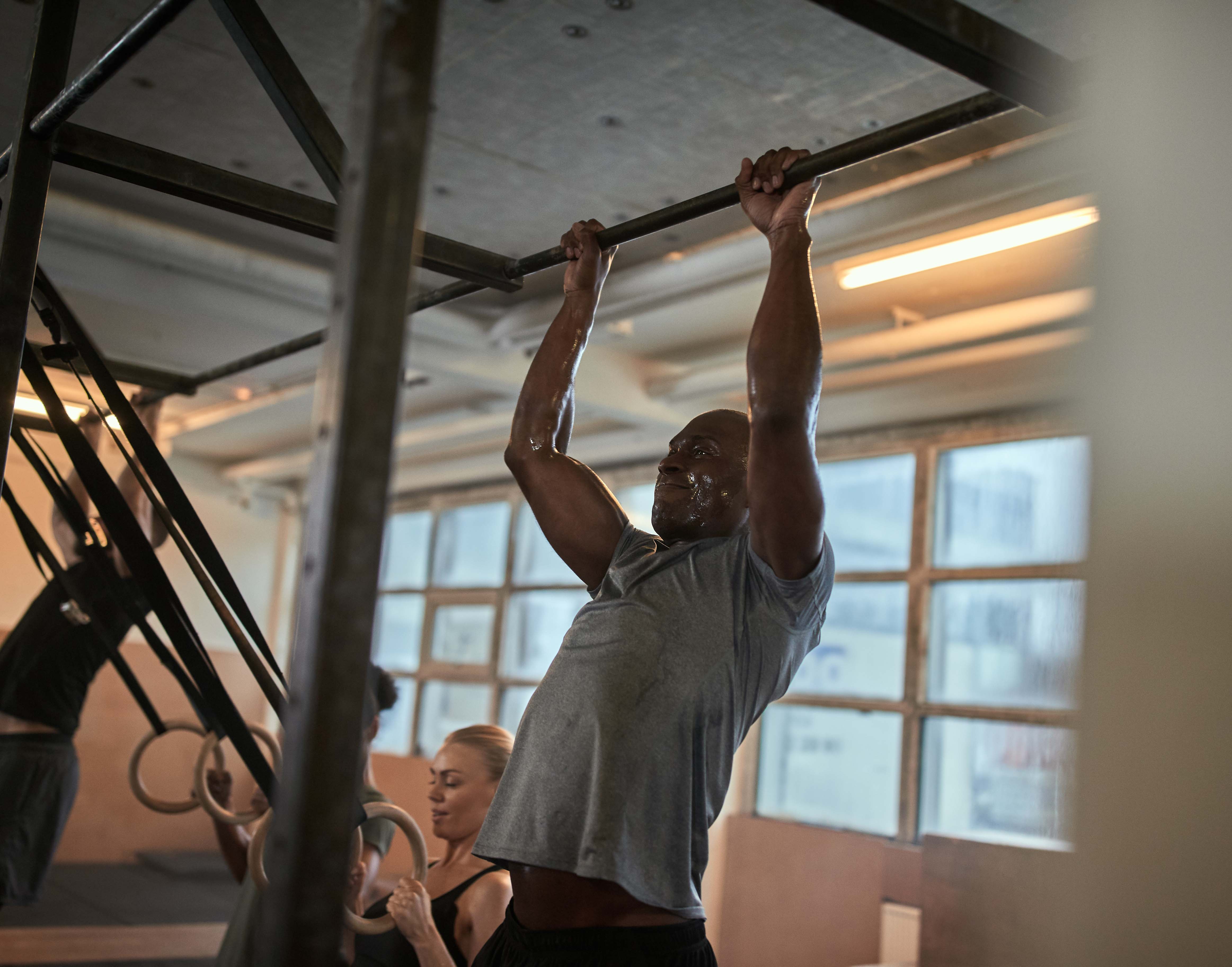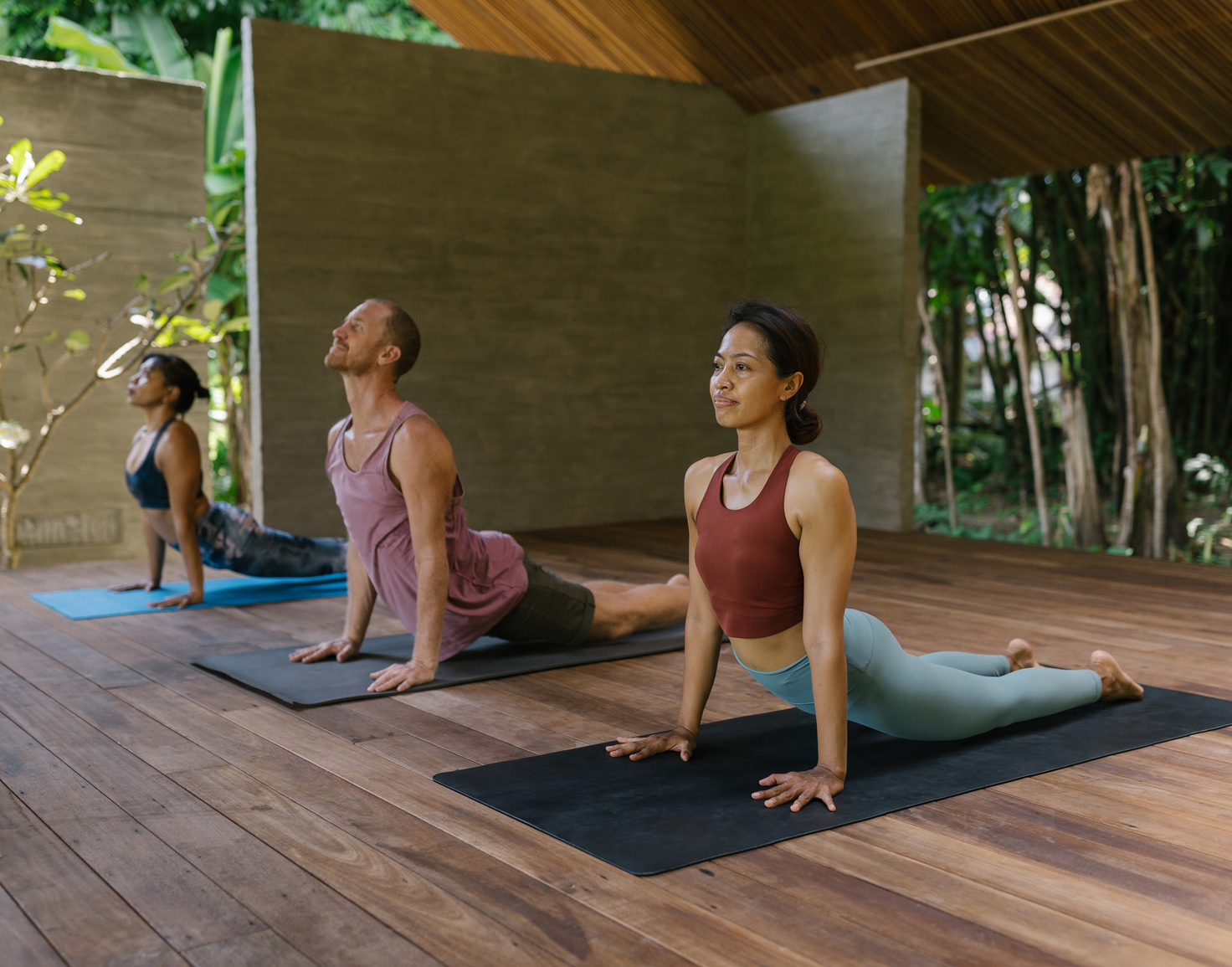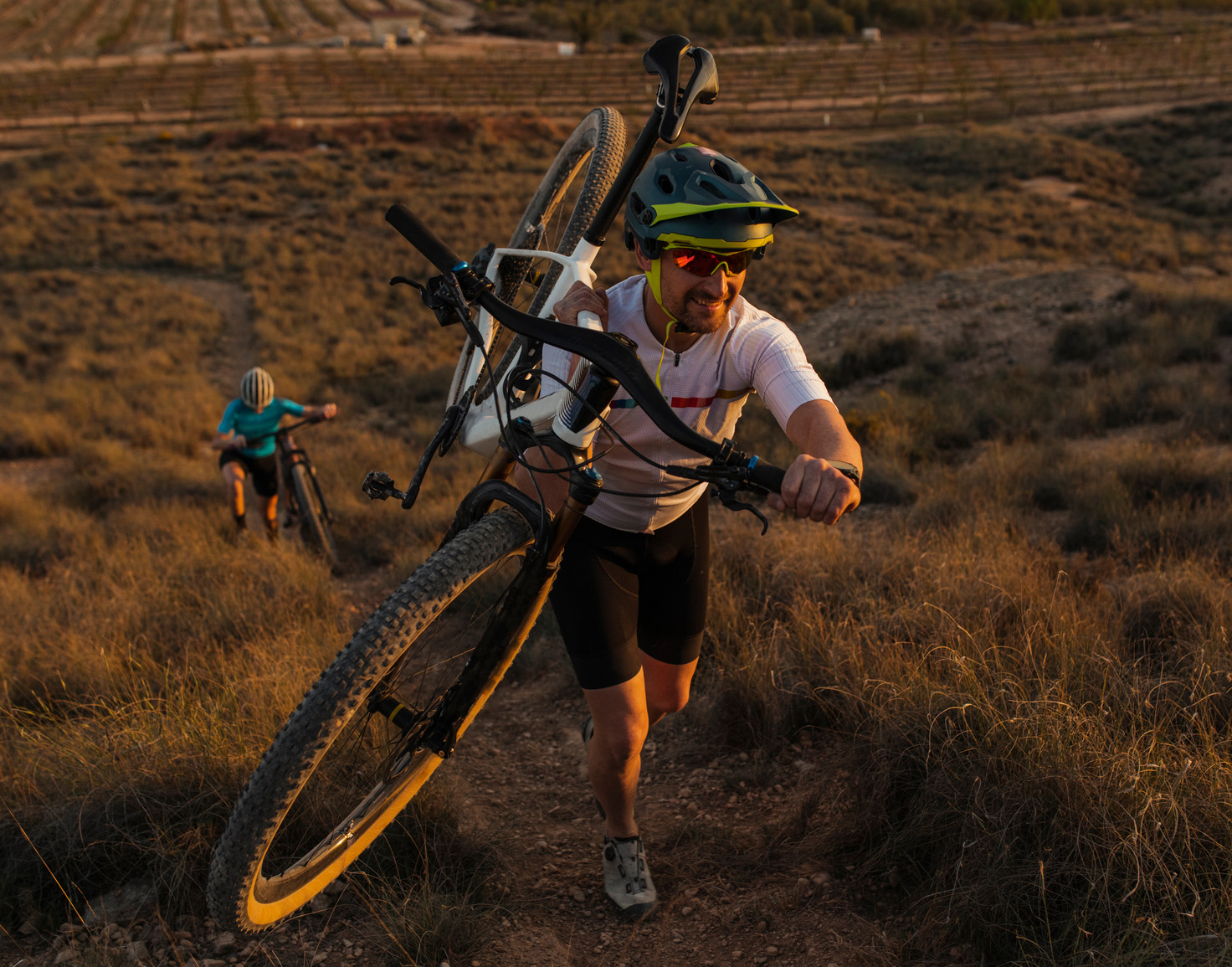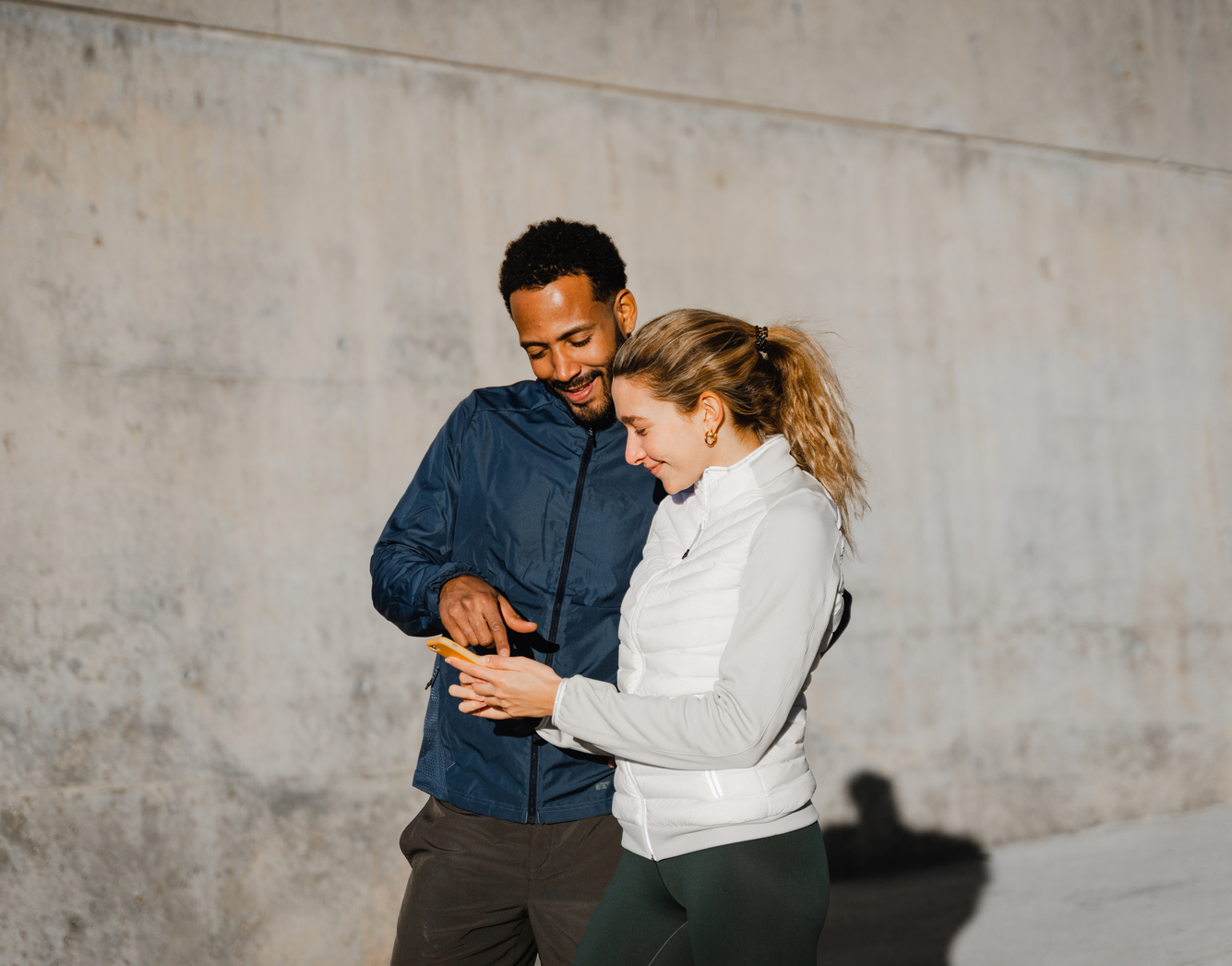Getting stronger can help you live longer. More and more research shows that exercise is linked to longevity — one study found that it can add up to eight years to your lifespan.
“Exercise is the closest thing we have to a longevity elixir,” says Lifeforce Senior Health Coach Kelly Lynch, who has a master's degree in Kinesiology and Exercise Science. “It’s not just about building strength. Exercise fortifies every system in our body, including mood regulation, immune resilience, and insulin sensitivity. It even influences the expression of genes related to aging. We have to maintain functional independence as we age, and regular movement helps us not just live longer, but live and move better.”
Workouts also work to reduce heart disease and diabetes risks, improve mental health, and support stronger bones and muscles, which are crucial for physical function and quality of life as we age, according to Lifeforce Physician Renae Thomas, MD, MPH. “Exercise is a highly underrated tool in the pursuit of longevity,” she says. “There is no pill like it!”
Our experts break down exactly how to train to gain more healthy, vital, and active years.
How Often Should You Train for Longevity?
Even short workouts can go a long way toward longevity. A study in the journal Circulation found that 2.5 to 5 hours of vigorous activity or 5 to 10 hours of moderate exercise per week helped people reduce their risk of early death by as much as 21%.
“You don’t need to work out every day to train for longevity. In fact, three to four structured workouts per week using a mix of strength and cardiovascular training can be very beneficial,” says Lifeforce Senior Health Coach, NASM Weight Loss Specialist, and personal trainer Vinnie Antonelli-Galizio. "What's equally important is how you move throughout the rest of your day. Daily walking, stretching, and general activity can have a significant impact.”
Read on to learn more ways to maximize your movement.
7 Strategies to Train for Longevity
 1. Preserve muscle mass with strength training.
1. Preserve muscle mass with strength training.
Maintaining muscle mass is key for longevity. “Muscle tissue helps regulate blood sugar, which supports metabolic health and lowers the risk of type 2 diabetes and cardiovascular disease,” Antonelli-Galizio explains. “Functionally, strength gives us independence. A person who maintains strength is more likely to stay mobile, reduce fall risk, and preserve their autonomy for years longer. In fact, studies show that falls are a leading cause of injury-related death in older adults, so preserving strength isn’t just about moving well, it’s about staying alive.”
That’s a strong argument to start strength training because “to preserve muscle, resistance training is non-negotiable,” Antonelli-Galizio says. “It’s the foundation of injury prevention and healthy aging.”
That doesn’t mean you need to hit the squat rack right away. Resistance training can include bodyweight training or working with free weights, machines, or resistance bands — whatever feels achievable to get your muscles working against resistance. Aim to train major muscle groups, like your chest, back, and glutes, at least two times per week, suggests Antonelli-Galizio. “If you’re unsure where to begin, working with a knowledgeable personal trainer or attending a beginner-friendly strength class can be a great place to start.”
2. Mix up your workouts.
While resistance training is important, it works best in combination with other forms of movement. “Most people think we’re just talking about bodybuilding when we talk about building muscle mass,” says Lifeforce Physician Russell Van Maele, MD. “However, I like to think of exercise as a Swiss Army knife. You have to be able to do several different types of workouts to be effective.”
Dr. Van Maele recommends combining strength training with cardio endurance, flexibility training, and a fun activity like mountain biking or walking in nature (he personally loves jiu-jitsu).
Antonelli-Galizio is also an advocate for making exercise as fun as possible. “Incorporating movement into your hobbies — like hiking, woodworking, or recreational sports — can help build strength and endurance in a more enjoyable and sustainable way,” he says.
 3. Make mobility a priority.
3. Make mobility a priority.
All the experts agree: Don’t miss out on mobility training. Mobility is a low-impact form of exercise that focuses on improving range of motion, stabilization, and control within your joints and surrounding muscles. “Mobility routines, stretching, and yoga can help your joints move better and reduce your risk of injury, so you can keep doing the things you love for longer,” Antonelli-Galizio says.
Lynch, who has a background as a mobility specialist, recommends doing a 30-minute mobility routine 1 to 2 days a week, in addition to 5 to 10 minutes of mobility first thing in the morning and right before bed. (She is a fan of Julia Reppel’s YouTube mobility videos, which include options for short and beginner-friendly routines.)
“When I work with Lifeforce members, improving functional mobility is a big priority,” Lynch says. “Yes, we should strength train, but if we can’t move our arm in a full 360 around us, we are decreasing our entire range of motion and our functionality in life.”
4. Practice nasal breathing.
For double the longevity benefits, Lynch suggests pairing mobility with slow nasal breathing. All you have to do is connect to your breath, inhale for 4 seconds, and exhale for 6 to 8 seconds.
According to Lynch, this practice calms the sympathic nervous system (the fight or flight response) and shifts the body into parasympathic recovery mode (the rest and digest phase).
“Stress impacts our body so heavily,” she says. “Activating your nervous system’s rest and digest mode is essential for resilience. It balances hormones, helps you process nutrients more efficiently, and reduces chronic inflammation, which is a major driver of heart disease, diabetes, and cognitive decline. Nasal breathing works as a remote control for your nervous system.”
Triple your perks by taking your mobility and nasal breathwork routine outdoors in the morning sunlight. Sunshine first thing helps reset your circadian clock, which studies have shown is beneficial for healthy aging and longevity.
 5. Maximize your V02 max.
5. Maximize your V02 max.
“VO2 max is a measure of how much oxygen your body can use during exercise. It gives us a good idea of how well your heart, lungs, and muscles work together when you're active,” Antonelli-Galizio says. “Generally, the higher your VO2 max, the better your cardiovascular fitness — and studies have shown that this is linked to a lower risk of chronic illness and even a longer life.”
VO2 max is most accurately measured in an exercise medicine lab, but there are also online tools to help you calculate it at home. This calculator offers the one-mile walk test, where you measure the time it takes to walk one mile as fast as you can and then check your heart rate using a wearable device or by taking your pulse. Enter the readings, and the calculator gives you an estimate of your VO2 max.
Once you know your baseline, you can focus on increasing your VO2 max. “To improve it, you don’t have to become a marathon runner,” Antonelli-Galizio says. “Adding regular cardio to your week can make a big difference. That could be a brisk walk, a bike ride, or swimming a few laps. Mixing in some higher-intensity efforts — like intervals, hill walks, or quick bursts during your usual workout — can give your VO2 max an even bigger boost over time.”
Lynch suggests doing a combination of high-intensity interval training (HIIT) and Zone 2 cardio, which consists of low to moderate intensity aerobic exercise for 30 to 60 minutes. The goal is to aim for 60 to 70% of your max heart rate. (You can estimate your max heart rate by subtracting your age from 220 bpm.) “Another easy test is the talk test,” Lynch says. “If you can speak in full sentences without gasping during a workout, then you are probably in Zone 2.”
6. Train your grip strength.
Here’s another way to get a grip on your longevity. “Grip strength is a simple yet powerful indicator of overall vitality,” Antonelli-Galizio says. “Research shows it correlates with total body strength, cardiovascular health, and even cognitive function.” One study revealed that a person’s grip strength can indicate their likelihood of living past 100. Antonelli-Galizio adds, “Grip is also a key predictor of functional independence — your ability to complete daily tasks like carrying groceries, opening jars, or holding your loved ones close.”
To enhance grip strength, Antonelli-Galizio suggests resistance training with a kettlebell. “Nearly every movement requires you to hold onto the weight, building grip endurance over time. Exercises like kettlebell swings, deadlifts, and farmers’ carries all tax your grip in functional ways.” He also suggests grip-specific drills like squeezing a stress ball or hanging from a bar. “Consistency over time will build the capacity your hands and forearms need.”
 7. Train your brain and body together.
7. Train your brain and body together.
Keep this in mind: “Cognitive fitness is just as critical as physical strength as we age,” Lynch says. She suggests training your body and brain at the same time with tools like BlazePods, which uses a reaction light training system to synchronize mental and physical fitness. For example, you might balance on one foot while tapping a light as it changes colors.
“As you age, reaction time slows and a fall risk can be dangerous,” Lynch says. “This type of training connects neural pathways in your brain, maintains neuroplasticity, enhances balance, and improves your reaction speed, coordination, and focus — all while keeping your workouts fun and engaging.”
Prioritizing your cognitive, physical, and mental health are all part of the long game. “Longevity isn't just about living longer; it's about living better,” Antonelli-Galizio says. “When it comes to exercise, start where you are. Even 10 minutes a day can have a profound impact when done consistently. Think of this as a lifelong investment. You're not just training for today — you're training for the decades ahead.”
This article was medically reviewed by:
Renae Thomas, MD, MPH; ABFM Board Certified in Family Medicine, ABPM Board Certified in Public Health, & General Preventive Medicine; ABLM Board Certified in Lifestyle Medicine
Russell Van Maele, DO, ABIM Board Certified in Internal Medicine

